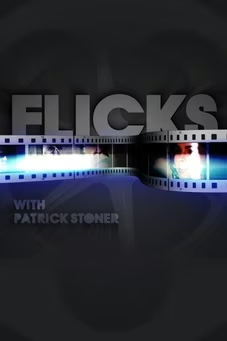KERA Arts Docs
'Feels like a hug:' Dallas Guggenheim recipient's quilted paper artwork honors East Texas roots
3/6/2025 | 5m 40sVideo has Closed Captions
Mixed media collage artist Evita Tezeno's work can best be described as "paper quilting."
Evita Tezeno's collage work can best be described as "paper quilting." The 2023 Guggenheim Fellow grew up knowing she would be a famous artist and recalls she had no "Plan B." Thirty years into her career, the starving artist found her success, gaining recognition outside of Dallas. Decades later, she says she feels embraced as an artist by the city she calls home.
Problems playing video? | Closed Captioning Feedback
Problems playing video? | Closed Captioning Feedback
KERA Arts Docs is a local public television program presented by KERA
KERA Arts Docs
'Feels like a hug:' Dallas Guggenheim recipient's quilted paper artwork honors East Texas roots
3/6/2025 | 5m 40sVideo has Closed Captions
Evita Tezeno's collage work can best be described as "paper quilting." The 2023 Guggenheim Fellow grew up knowing she would be a famous artist and recalls she had no "Plan B." Thirty years into her career, the starving artist found her success, gaining recognition outside of Dallas. Decades later, she says she feels embraced as an artist by the city she calls home.
Problems playing video? | Closed Captioning Feedback
How to Watch KERA Arts Docs
KERA Arts Docs is available to stream on pbs.org and the free PBS App, available on iPhone, Apple TV, Android TV, Android smartphones, Amazon Fire TV, Amazon Fire Tablet, Roku, Samsung Smart TV, and Vizio.
Providing Support for PBS.org
Learn Moreabout PBS online sponsorship- When I first started doing artwork, I was doing black figures in their oppression and style, and someone told me, oh, your work is derivative.
So that's when I prayed.
I had that dream that an angel came to my door and gave me a book of sketches and, or like a blueprint to another style, and told me, if you do this, if you follow this blueprint, you will be successful.
And the rest is history.
My name is Avita Tiano and I am a collage artist.
People say my, my work look like quilts.
So I, I call it paper quilting.
Everything is based on memories and I put in fictional characters.
I grew up in Port Arthur, Texas, on the west side of town, and that was normally the African American side of town.
Oh, it's very close family.
I grew up with a slew of great-grandparents.
We would go to my great-grandmother's house and we would make crackling.
That's hawg skins in the backyard.
And we would make boan, which is like a sausage.
We would all be around the table making this as a family.
And it was a memory that I will never forget.
I struggled for a very long time as an artist.
I was a starving artist.
I didn't see my career blossoming in the Port Arthur and the, they called it the growth and triangle.
So I said, I wanna move to Dallas.
I fell in love with Dallas.
I went around to a lot of galleries here in Dallas.
And I got rejection after rejection, after rejection.
I remember that I would do chefing all day.
I was a private chef and I would work, and then I would come home and I would get in the, on the floor in my little small apartment.
And I would do artwork 'cause that's all I could afford at the time.
I was introduced to galleries by pulling up, taking my workout and showing them.
I was determined that I was gonna make this happen.
And what was the gift was the internet, because the gallery that I am with now, they found me on Instagram.
My whole life changed.
This piece that I'm doing is reminiscent of the memory of going to the Hollywood Theater.
So this, this particular piece is going to my show that's gonna be in Beaumont, Texas at my alma mater.
This very building that I'm having, the Show Inn, which is the Dishman Museum, is the same museum that I had my senior thesis show in 1984.
I remember sitting in my car and I saw the, the notification on my phone.
It said Guggenheim, and it said, congratulations, you are a 20, 20, 23 fellow at fine arts.
It's changed my life.
I'm in the company of greatness.
Not until I got famous outside of Dallas, that's when I got embraced.
And I think a lot of other artists can agree with me.
I think that happens in every town, though.
I think that you have to get out of where you are and get some applause before you are accepted in your, your hometown.
So in a lot of my pieces, I incorporate buttons.
And so the cool thing about these buttons are when my grandmother passed in 2016, she, she, well, she was a, a seamstress and my great-grandmother was a seamstress.
And also my aunt and my mo, my grandmother had a treasure trove of antique buttons that she had, I guess garnered from my great-grandmother and also my aunt.
And she had these jars of buttons.
So I started, I said, what I'm gonna do with these?
And so I started incorporating with them in my work.
And to me, it, every piece of work has a little bit of my grandmother that goes with it.
Yeah.
Support for PBS provided by:
KERA Arts Docs is a local public television program presented by KERA















